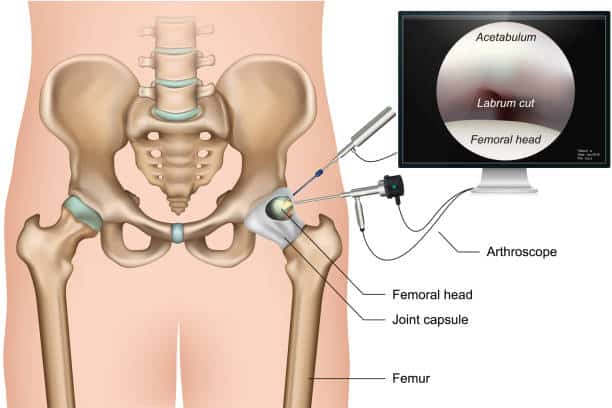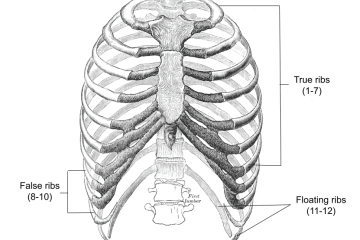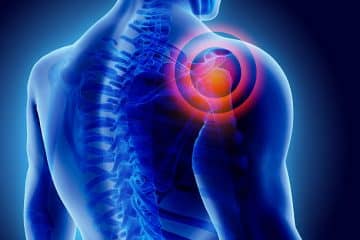Hip Arthroscopy – Overview

Hip Arthroscopy
Although most hip diseases and discomfort can be treated effectively with conservative approaches such as physiotherapy and medications, a small percentage of cases do not improve. In certain circumstances, your orthopedic surgeon may recommend a hip arthroscopy as a surgical option.
A surgeon performs a hip arthroscopy by introducing a small device (arthroscope) into the joint. The camcorder produces images on a tv screen, which your doctor uses to control the surgical equipment during the procedure.
The operation will be done based on the results of the imaging studies and the doctor’s assessment of the hip during the arthroscopic procedure.
What is Hip Arthroscopy
Hip arthroscopy is a popular procedure used to address pain and inflammation caused by a number of conditions. Arthroscopy is a procedure that allows surgeons to see inside the hip joint and identify hip issues.
While your surgeon may have an idea about why you’re in discomfort or unable to walk, an arthroscopy will accurately diagnose and help the surgeon to establish a treatment plan.
Hip arthroscopy is a highly technical procedure that is far less aggressive than traditional surgical intervention. To function well, it takes a lot of expertise and expert postgraduate training.
Indications of Hip Arthroscopy
There is a long list that includes the indications for hip arthroscopy, from which we mention the following:
• Labral tears
• Ligamentous diseases
• Ligamentum teres diseases
• Drainage of septic arthritis
• Removal of loose bodies
• Femur-acetabular impingement
• Sub-spine impingement
• Synovial diseases
• Capsular diseases
• Psoas tendon diseases
• Greater trochanteric pain syndrome
• Iliotibial band disorder
• Ischiofemoral impingement
• Proximal hamstring diseases
• Sciatic nerve diseases
Contraindications of Hip Arthroscopy
The following are the issues that interfere with the procedure:
• More complex and extensive diseases and young patients
• posterolateral extension of CAM deformity and global rim trim
• pediatric disease consequences including Perthes disease and slipped capital femoral epiphysis.
• Large chondral delamination and complex labral reconstruction
How Hip Arthroscopy is Performed?

Hip Arthroscopy
Mostly the procedure is done under the effect of local anesthesia which carries a lower risk of complications and shorter hospital stay.
Patient Position
Your leg will be pulled at the beginning of the operation. This indicates your hip will be lifted apart from the socket long enough for the surgeon to implant devices, examine the entire hip, and provide the appropriate therapy.
Surgeons draw the lines on the thigh to identify specific anatomical structures (such as femur, nerve, arteries, and veins) as well as cut sites and arthroscope ports.
Making the Incision and Accessing the Area
After placement with the fluoroscope, a needle will be placed into the joint space, and the joint will be filled with a sterile, liquid solution, providing hydrostatic flow to assist maintain the joint wide.
A guiding wire is placed through the needle, which is then retrieved, after which a cut is formed.
The technique
The articular cartilage that covers both the head of the femoral head, which is positioned at the top of your thighbone and the acetabulum which is the inside of the socket will usually be examined by your doctor.
The cartilage enables the bony articular surfaces to glide easily against one another. In addition, your doctor will look at cartilaginous structures around the joint and the joint space.
Closing the wound
The doctor will let the assistant close the wound under his observation.
Risks of Hip Arthroscopy
Possible complications of arthroscopic hip surgery include:
• Injury to surrounding structures such as acetabular labrum and cartilage
• Injury to neurovascular structures
• Postoperative infection including wound, chest, and urinary tract infections
• Deep vein thrombosis is blood clots formed inside the venous system of the lower limb
• Instability
• Avascular necrosis of the femoral head
• Adhesions
• Heterotopic ossification is the growth of bone in aberrant sites
• Femoral Neck Fracture
• Trochanteric Bursitis and Iliopsoas Tendinitis
How Long Does Hip Arthroscopy Last?
The arthroscopic procedure is done in the outpatient clinic and requires 30 minutes to two hours to be done. You can go home on the same day of the operation.
Cost of Hip Arthroscopy
In the United States, the cost of this procedure is ranging from 5,000$ to 9,000$, with medical insurance covering a part of the cost.
Conclusion
Hip arthroscopy is a therapeutic and diagnostic procedure that allows for a minimally invasive approach to the hip joint and has improved the management of numerous hip joint disorders. It is very operator reliant, not suitable for the casual operator, and not without challenges.
To decrease the occurrence of complications after this operation, the appropriate indications for the selection of patients, as well as experienced surgeons with an understanding of the issues related to the procedure are necessary.
References
https://emedicine.medscape.com/article/2500026-overview
https://pubmed.ncbi.nlm.nih.gov/28678628/
https://www.ncbi.nlm.nih.gov/pmc/articles/PMC4519569/
https://www.hss.edu/condition-list_hip-arthroscopy.asp
See Also

Dr.Sharif Samir Alijla, is a general medical doctor and a well-rounded professional that cares and treats patients from Palestine. I participated in many medical studies and conferences, I've launched a range of community initiatives and taken part in a variety of leadership and change training programs. I worked as an author for many medical websites such as TebFact . I specialized in writing medical articles from authoritative and updated sources in a simple and smooth the way for the reader.



